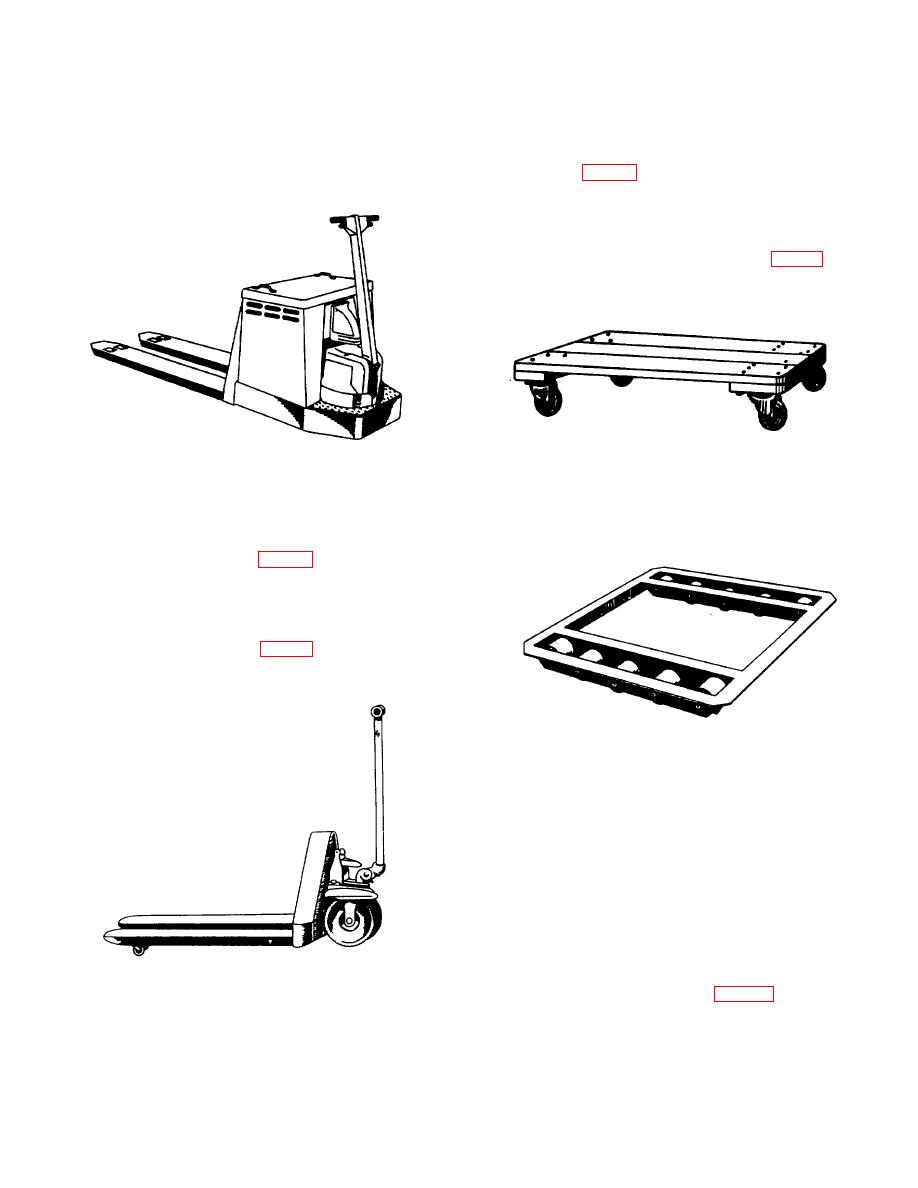 |
|||
|
|
|||
|
|
|||
| ||||||||||
|
|
 TM 38-400/NAVSUP PUB 572/AFMAN 23-210 MCO 4450.14/DLAM 4145.12
well as for in-process movements during shipping and
c. Dollies. Dollies are frames mounted on wheels
receiving operations. It works well in conjunction with
or rollers used for shifting heavy loads over short
forklift trucks and can be operated where the forklift
distances. The following three standard types of dollies
cannot because of space limitations. The following
are available:
types of handlift trucks have been adopted as standard
(1) The first is the general-purpose dolly with
for the military services:
swivel wheels (fig 4-8). The second type of dolly, with a
capacity of 4,000 pounds, is used primarily to move
palletized loads in and out of boxcars, highway trucks,
and trailers. Also, it is used within boxcars to move
loads to doorway area for pick up by forklift trucks when
the car is not alongside a loading platform (fig 4-9).
Figure 4-6. Truck, lift, hand, electric, pallet-type.
Figure 4-8. Dolly general-purpose.
(1) Truck, lift, hand, electric, pallet-type. This
model is used whenever the distance the load is to be
moved, the size of the load, the presence of grades or
inclines along the route, or other considerations require
the use of powered equipment (fig 4-6).
(2) Truck, lift, hand, pallet-type. This model
is used whenever the operating conditions do not require
a handtruck with the special characteristics of the
powered model. It may be an advantage in the loading
of boxcars, trucks, and aircraft (fig 4-7).
Figure 4-9. Dolly, pallet rollers.
(2) The advantages of the third type of dolly
are maneuverability, ease of operation, and suitability
for use on truck and reefer floors. The wheels in the
central portion are placed slightly lower than the wheels
at the ends. the wheels at the ends are held in position
by springs, which allow them to move on their axles as
the load is guided to its destination. The difference in
height of center and end wheels permits a certain
amount of rocking motion which aids in movement and
guidance. That is, the tilting effect allows the dolly to
turn and the center wheels (on offset axles) prevent the
lodging of wheels in slatted floors (fig 4-10).
Figure 4-7. Truck, lift, hand, pallet-type.
4-6
|
|
Privacy Statement - Press Release - Copyright Information. - Contact Us |